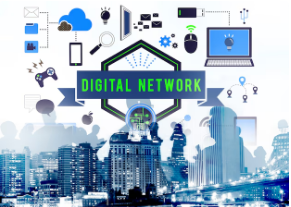In the digital era, the rise of e-commerce has transformed the way businesses operate, presenting immense opportunities for growth and expansion. However, with the increasing competition in the online marketplace, effective e-commerce marketing strategies are essential for standing out and driving sales. This article explores various strategies that can help businesses succeed in the e-commerce landscape.
Understanding E-commerce Marketing
E-commerce marketing encompasses a variety of tactics aimed at promoting products or services online to attract and convert customers. It involves leveraging multiple digital channels, such as search engines, social media, email, and content marketing, to reach potential buyers and encourage them to make purchases. Here are some key strategies for successful e-commerce marketing:
1. Search Engine Optimization (SEO)
SEO is a fundamental aspect of e-commerce marketing. It involves optimizing your website and product pages to rank higher in search engine results pages (SERPs). Higher rankings increase visibility and drive organic traffic to your site. Here are some SEO practices to consider:
- Keyword Research: Identify relevant keywords that potential customers use to search for products similar to yours. Use tools like Google Keyword Planner or SEMrush to find high-traffic keywords.
- On-Page Optimization: Optimize your website’s content, meta descriptions, title tags, and URLs with target keywords. Ensure that your product descriptions are unique, detailed, and include relevant keywords.
- Technical SEO: Improve your website’s loading speed, mobile responsiveness, and ensure it’s easily crawlable by search engines. Use tools like Google PageSpeed Insights to assess and enhance your site’s performance.
- Link Building: Acquire high-quality backlinks from reputable websites to boost your site’s authority and search engine ranking.
2. Content Marketing
Content marketing is about creating valuable, relevant content to attract and engage your target audience. It helps build trust and authority, driving organic traffic and conversions. Here are some content marketing strategies:
- Blogging: Maintain a blog with informative and engaging articles related to your products or industry. This can drive traffic to your site and improve your SEO.
- Product Guides and Tutorials: Create comprehensive guides and tutorials that demonstrate how to use your products effectively. This can help potential customers understand the benefits of your products and encourage purchases.
- User-Generated Content: Encourage customers to share their experiences and reviews. User-generated content adds authenticity and can significantly influence potential buyers’ decisions.
3. Social Media Marketing
Social media platforms offer powerful tools for reaching and engaging with your target audience. Here are some social media marketing strategies:
- Platform Selection: Focus on the platforms where your target audience is most active. For instance, Instagram and Pinterest are great for visual products, while LinkedIn is ideal for B2B marketing.
- Engaging Content: Share engaging content, including images, videos, and stories that resonate with your audience. Use features like Instagram Stories, Facebook Live, and Twitter polls to interact with followers.
- Influencer Partnerships: Collaborate with influencers in your industry to promote your products. Influencers can help you reach a wider audience and build credibility.
- Social Media Ads: Invest in paid advertising on social media platforms. Targeted ads can help you reach specific demographics and increase your chances of conversion.
4. Email Marketing
Email marketing remains one of the most effective e-commerce marketing strategies. It allows you to directly communicate with potential and existing customers. Here are some email marketing tactics:
- Segmentation: Segment your email list based on customer behavior, preferences, and demographics. This allows you to send personalized and relevant content.
- Automation: Use email marketing automation tools to send triggered emails based on customer actions, such as abandoned cart emails, welcome series, and post-purchase follow-ups.
- Engaging Content: Create compelling email content with strong subject lines, engaging visuals, and clear calls-to-action (CTAs). Offer exclusive discounts and promotions to encourage purchases.
5. Pay-Per-Click (PPC) Advertising
PPC advertising allows you to place ads on search engines and other platforms, paying only when someone clicks on your ad. Here are some PPC strategies:
- Google Ads: Use Google Ads to bid on keywords relevant to your products. Create targeted ads that appear in search results, driving traffic to your site.
- Retargeting: Implement retargeting campaigns to reach users who have previously visited your site but didn’t make a purchase. Retargeting ads can remind them of your products and encourage them to return and complete their purchase.
- A/B Testing: Continuously test different ad creatives, headlines, and targeting options to optimize your PPC campaigns for better performance.
6. Analytics and Data-Driven Decisions
To ensure the success of your e-commerce marketing efforts, it’s crucial to monitor performance and make data-driven decisions. Here’s how:
- Analytics Tools: Use tools like Google Analytics, Shopify Analytics, or other e-commerce platforms to track key metrics such as traffic, conversion rates, average order value, and customer lifetime value.
- Customer Insights: Analyze customer behavior and preferences to identify trends and opportunities. Use this data to refine your marketing strategies and improve customer experiences.
- Continuous Improvement: Regularly review your marketing campaigns and performance data. Adjust your strategies based on what works and what doesn’t to continuously improve your results.
Conclusion
Successful e-commerce marketing requires a comprehensive approach that leverages multiple digital channels and strategies. By optimizing your website for search engines, creating engaging content, utilizing social media, implementing effective email marketing, investing in PPC advertising, and making data-driven decisions, you can drive traffic, increase conversions, and grow your online business. With the right strategies in place, small businesses can compete effectively in the bustling e-commerce marketplace and achieve sustained success.









